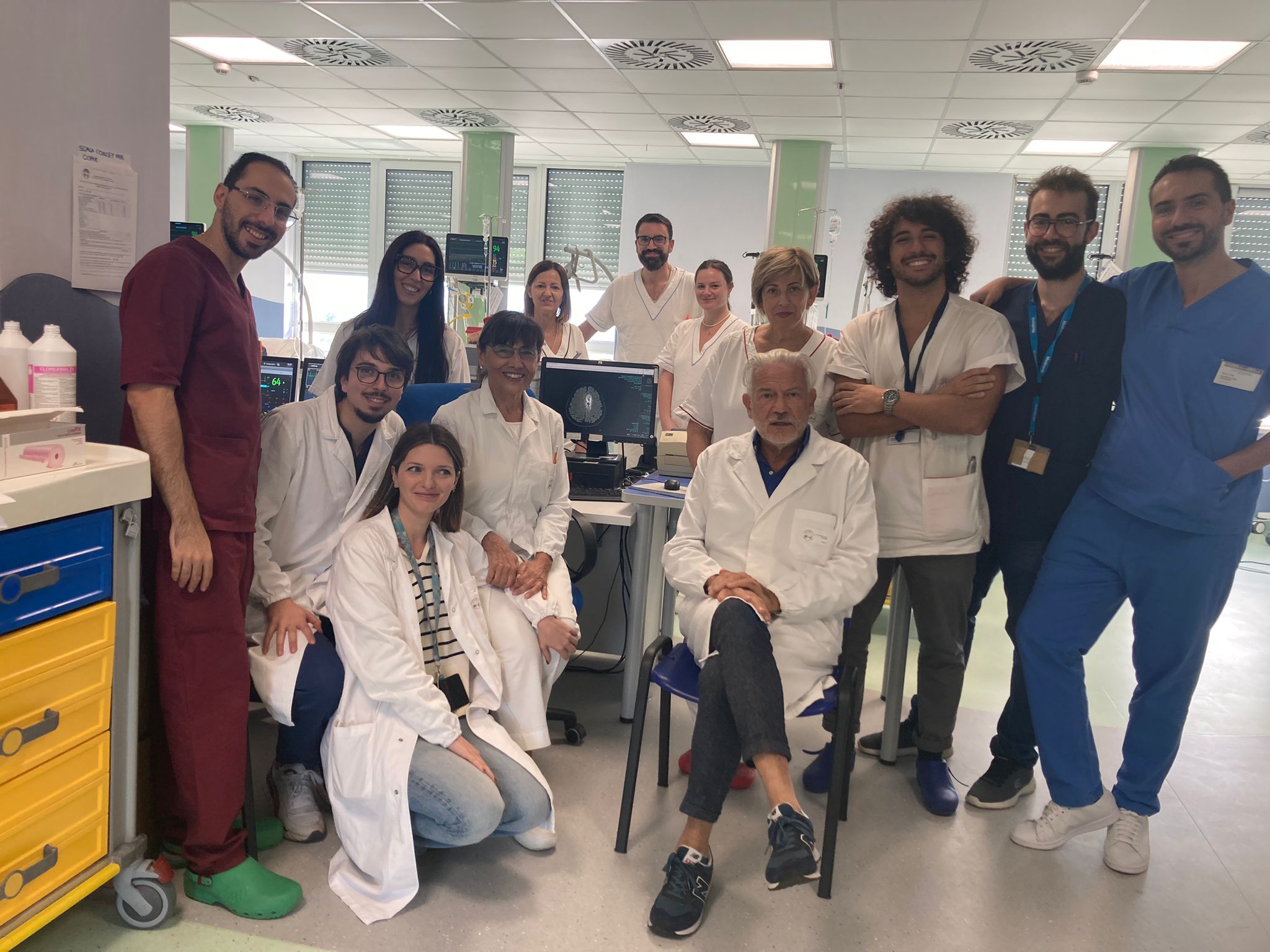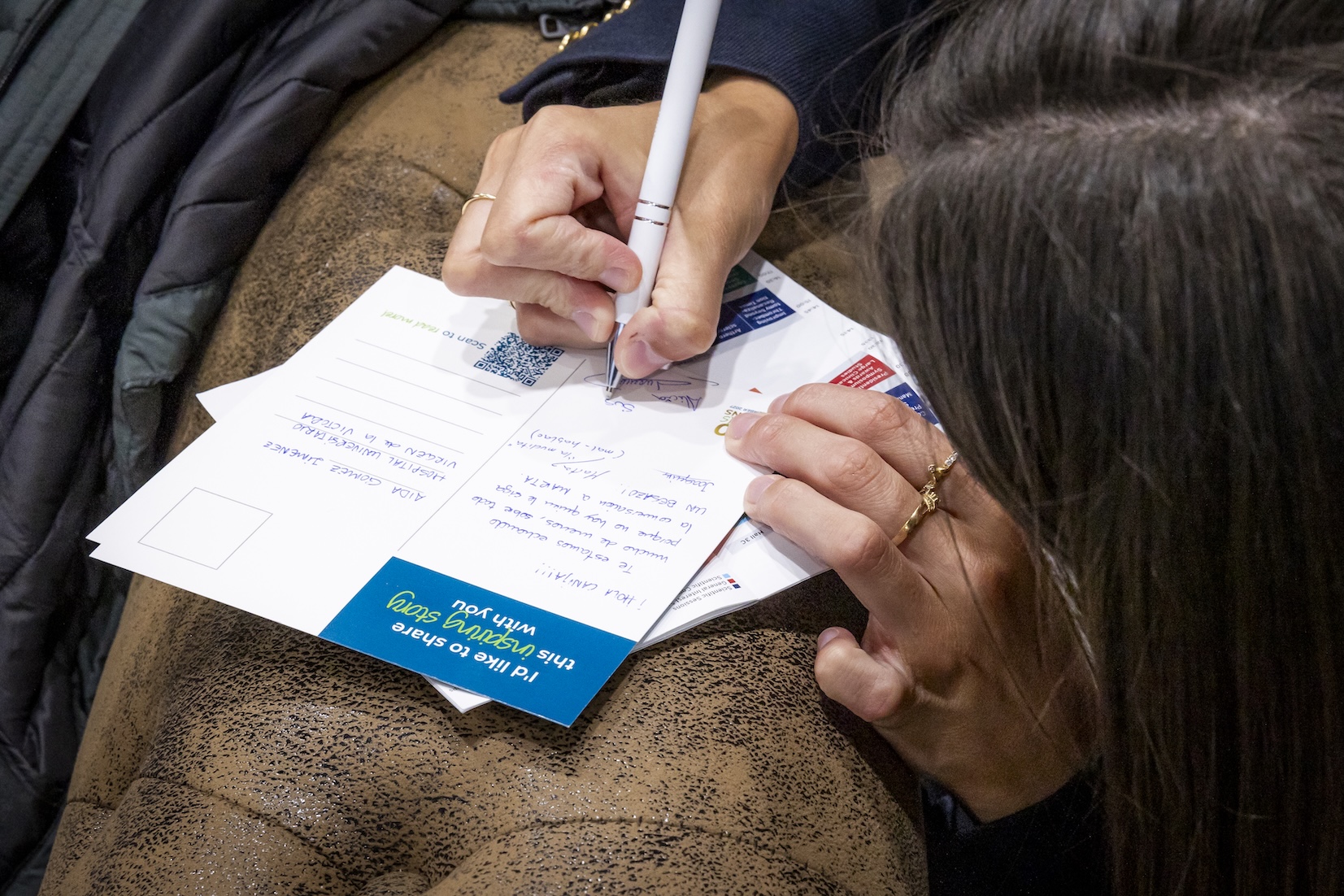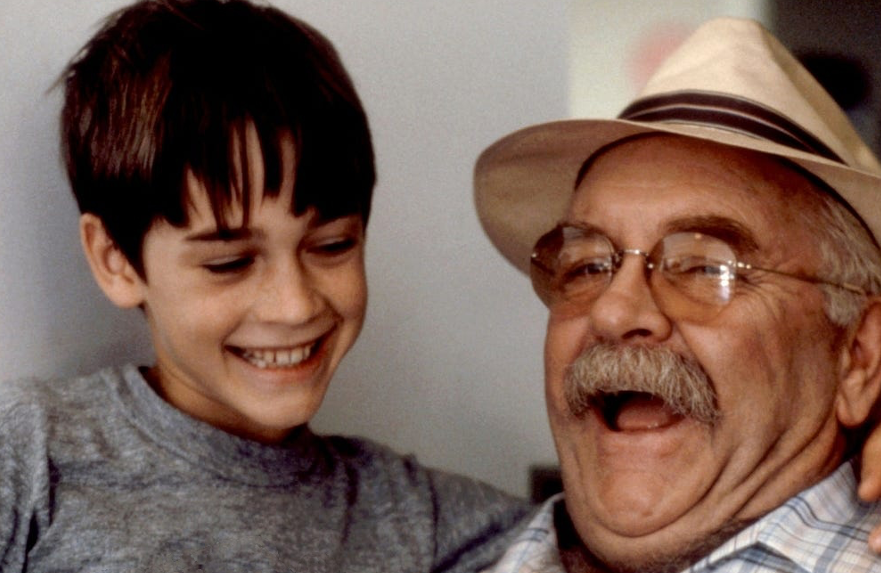
L'hôpital universitaire San Giovanni di Dio e Ruggi D'Aragona de la province de Salerno en Italie a une histoire aussi longue que votre bras. Il s'agit en outre, comme son nom le suggère, d'une histoire de deux anciens hôpitaux qui ont fusionné en 1898, d'un nouveau siège social en 1923, d'un déménagement à San Leonardo en 1980, et en 2013 a été intégré à la faculté de médecine de l'Université de Salerno dont l'histoire est encore plus longue.
En ce qui concerne le traitement de l’accident vasculaire cérébral aigu, cependant, nous pouvons reprendre l’histoire en 1981, l’année où le Dr Rosa Napoletano, originaire de Salerne, a rejoint l’hôpital. Travaillant initialement en neurophysiologie où elle a traité la sclérose en plaques, le traumatisme crânien et la maladie de l’artère carotide, et plus tard en tant que médecin dédiée au centre de la sclérose en plaques, le Dr Napoletano est devenu chef de l’unité neuro-vasculaire en 2010. Selon elle, son premier engagement était de commencer à traiter l’accident vasculaire cérébral par thrombolyse.
"En tant que jeune médecin, j'ai ressenti des années de grande frustration quant au traitement des patients accident vasculaire cérébral alors que j'ai suivi avec intérêt les débuts de nouvelles approches thérapeutiques pour ces patients dans d'autres pays, d'abord comme traitement dans des structures dédiées (unités neuro-accident vasculaire cérébral) puis par thrombolyse. L'efficacité de ces approches thérapeutiques a permis de vérifier l'intérêt consolidé et m'a motivé à toujours me tenir au courant de tout ce qui est étayé par des preuves scientifiques".
En ne perdant pas de temps à mettre en pratique les preuves scientifiques, le Dr Napoletano a traité sa première patient avec une thrombolyse cette même année.
"Je me souviens très bien. Le patient était un professeur religieux qui m’avait été adressé par un hôpital périphérique pour une hémiparésie droite avec dysarthrie. À l’époque, mes collègues étaient tous plus âgés que moi et ne voulaient pas changer leur approche de la maladie avec un thérapie considéré comme risqué.
"Mais je me suis sentie préparée. J'avais ma liste de contrôle 'mentale', j'étais prête à continuer. Avec l'aide de l'infirmier/ère de garde – ce sont les infirmières qui ont été les plus enthousiastes au départ – nous avons réalisé le traitement qui s'est bien passé".
L'intégration de l'hôpital à l'université en 2013 a toutefois posé de nouveaux défis. "Il y avait des problèmes liés aux espaces, aux rôles et aux compétences", dit le Dr Napoletano. Dans le processus de restructuration inévitable, les deux neurologues dédiés de l’unité neuro-vasculaire faisaient partie de ceux qui préféraient une retraite anticipée. Ensuite, le processus de recrutement inévitable a négligé de préciser le personnel de l’unité neuro-vasculaire. Par conséquent, le personnel soins de santé, y compris le personnel infirmier, tourne désormais entre l’unité neurologique et l’unité neuro-vasculaire, une pratique qui a initialement rendu difficile le maintien de normes qui dépendent d’un personnel très motivé avec des compétences spécialisées.
"C'était des années difficiles", reflète le Dr Napoletano.
En 2017, toutefois, le Dr Napoletano a trouvé un allié chez Stefania Fiorillo, consultant echez Angels. Elle dit "Je me souviens clairement de la rencontre avec Stefania en 2017. Elle m'a donné le courage et le soutien nécessaires pour entreprendre un programme de formation impliquant tous les acteurs de la chaîne de soins".
La pratique d'un personnel médical et soins infirmiers en rotation a rendu nécessaire de couler une large moustiquaire. "Nous avons formé l'ensemble de l'hôpital", dit Stefania. D’autres interventions comprenaient l’élaboration d’un protocole d’accident vasculaire cérébral, l’organisation du parcours de l’accident vasculaire cérébral conformément aux directives, la formation à la simulation et la pose des bases pour un service de thrombectomie mécanique qui viendrait à se poser en 2018.
Le nombre de patients traités a augmenté, le délai d’attente avant la prise en charge a diminué et en 2019, l’hôpital a remporté son premier prix en or Angels de l’ESO.
Le prochain tournant est arrivé en 2020, indique Stefania, avec l’introduction de MonitorISA, un projet conjoint d’Angels et de l’Association italienne de l’AVC (ISA) qui désigne deux mois par an pour la collecte de données. L'accent mis sur le suivi de la qualité à San Giovanni di Dio e Ruggi D'Aragona a permis de constater une baisse significative du délai d’attente avant la prise en charge et d'augmenter le taux de recanalisation, explique Stefania. Il a également relevé le statut de sa prix. Après avoir remporté des prix platine dans les première et deuxième éditions de MonitorISA, l'équipe du Dr Napoletano a remporté son premier Prix diamant Angels de l'ESO en 2022.
Participer à l’étude MonitorISA était une décision logique, explique le Dr Napolitano, qui est également le coordonnateur régional de l’ISA. "Je crois que la mesure de soi-même est essentielle pour améliorer la qualité de notre travail. Sur le plan psychologique, le sens du suivi peut être une incitation à agir plus vite, mais en même temps il nous permet de rechercher les stratégies les plus efficaces pour réduire les temps, qui deviennent alors partie intégrante des protocoles".
Concentrez-vous sur la formation, mesurez les résultats et apportez votre engagement et votre passion, est le conseil du Dr Napoletano aux hôpitaux peu performants dont la région a plusieurs. Selon Dr Stefania, la Campanie (où se trouve Salerno et dont Naples est la capitale) est une région difficile pour les soins neuro-vasculaires. Il présente la deuxième incidence d’accident vasculaire cérébral la plus élevée après le Sicile, mais pas d’autorité sanitaire dédiée et pas de réseau d’accident vasculaire cérébral.
Et bien que les connexions de transport d'urgence devraient s'améliorer, pour l'instant San Giovanni di Dio e Ruggi D'Aragona reste un pôle sans rayon.
"Il est très important de se mettre en relation avec d'autres hôpitaux sur la carte", explique Stefania. "Mais Salerno c'est très gros et ça le rend difficile."
Selon le Dr Napoletano, une pénurie de neurologues dans toute la région a également entravé les progrès. À Salerne, c’est une crise exacerbée par la réticence des neurologues à servir dans les hôpitaux éloignés. Mais ils ont désormais la capacité de partager des images de neuroradiologie avec des hôpitaux situés dans des endroits éloignés, et une plateforme de télé-AVC bientôt activée entrera dans une phase expérimentale de thrombolyse par télémédecine impliquant ces hôpitaux.
Ces dernières années, le Dr Napoletano a constaté de nombreux changements positifs. Les récompenses ont amélioré le travail d’équipe et les relations. Davantage de personnes, y compris plus de professionnels de soins de santé, connaissent les traitements possibles de l’accident vasculaire cérébral. Il existe une collaboration plus active avec les prestataires de soins pré-hospitaliers. De plus en plus d’étudiants sont spécialisés en neurologie et certains d’entre eux ont montré un intérêt pour la pathologie vasculaire. Les centres primaires de la province de Salerno surmontent enfin leur réticence à traiter l’accident vasculaire cérébral aigu. Et l’enthousiasme indéfectible et l’esprit collaboratif au sein de l’équipe de neuroradiologie ont été une source d’inspiration tout au long de l’événement.
Mais si vous demandez au Dr Napoletano qui sont les véritables héros de l’unité neuro-vasculaire, elle n’hésite pas.
"Les infirmières surtout les premières années. À l’époque, ils n’avaient pas tous des connaissances suffisantes, ce qui les rendait impatients de participer à la formation et enthousiastes à propos des résultats. Ils s'occupent des patients, jour et nuit, et leur soutien parfois même joyeux était fondamental pour consolider les résultats du traitement".
Le personnel médical et soins infirmiers dédié à l’unité neuro-vasculaire reste en tête de sa liste de souhaits, mais par "dédié" le Dr Napoletano signifie une équipe affectée à un objectif spécifique, et non plus dédiée à leur tâche. La perte de personnel spécialisé était difficile, dit-elle, "mais leur perte a été rattrapée par l'engagement de ceux qui sont spontanément devenus passionnés par l'accident vasculaire cérébral".




